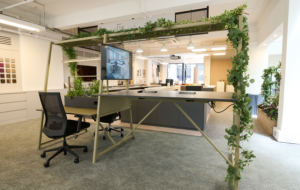|
A rising star of Iceland’s emerging design scene, her work is inspired by the country’s traditional industries and storytelling culture Thorunn Arnadottir, who was chosen as one of Icon’s Future 50 (Icon 122), spent last autumn working in a fishing net factory in Eskifjörður, a remote port in eastern Iceland. There she watched the all-male employees, clad in blue dungarees and working mainly in silence, skilfully mend holes in kilometres of brightly coloured nylon mesh. “It was an amazing space,” Arnadottir told me when we met in Reykjavík during the city’s DesignMarch festival. “It was really big, with huge rooms of ropes and big clasps. The net looked like a huge scarf with tiny ants working on it.” One of four designers dispatched to the isolated Austurland region to explore ways in which the creative industries might help to regenerate the local economy, Arnadottir spent her apprenticeship, she says, “just testing out stuff, running around excited by the materials and colours”. (The latter, she explains, are used as a kind of organisational device by the fishing industry.)
Skip Ahoy skipping ropes made from fishing nets She also learned some “basic networking skills” from a craftsman who taught these traditional techniques to local schoolchildren. Inspired by their schoolyard breaks, she wove the synthetic fibres into hula hoops and skipping ropes, some of which have handles made from polished antler. The results were shown in an exhibition curated by Pete Collard at Reykjavík’s Spark Design Space, alongside seaweed chandeliers “The design scene in Iceland has really grown in the last few years,” says Collard, explaining that the Icelandic word for design (hönnun) didn’t even exist in the 1950s. “Almost the lack of materials and resources is a benefit, because it really focuses the designers – forces them to be more resourceful and clever.” Arnadottir, who studied product design at the Royal College of Art, from where she graduated in 2011, is a proponent of Slow Design (an idea appropriated from gastronomy, where the concept of Slow Food opposes the fast variety).
Sasa clock, which tells the time using a wooden bead necklace Also on show at the gallery was a clock created from a rosary of coloured beads, one of which dropped from a revolving cog every five minutes with a satisfying click. “You can take off and wear the necklace, thereby becoming the clock yourself,” she says, evoking the meeting point between industrial and tribal cultures. “It’s a way of liberating yourself from time.” “Design’s quite new here,” Arnadottir says of Iceland. “We don’t have a tradition like other Scandinavian countries. But we have a rich culture of storytelling, and in all my projects I like to have a narrative.” As an example she cites her Pyropet candle, which she hopes soon to mass-produce (8,000 have been presold on Kickstarter). Its 3D-printed form slowly melts to reveal a comically creepy metal skeleton. “It’s like a romantic film that turns into a horror movie,” she says. |
Words Christopher Turner |
|
|


















